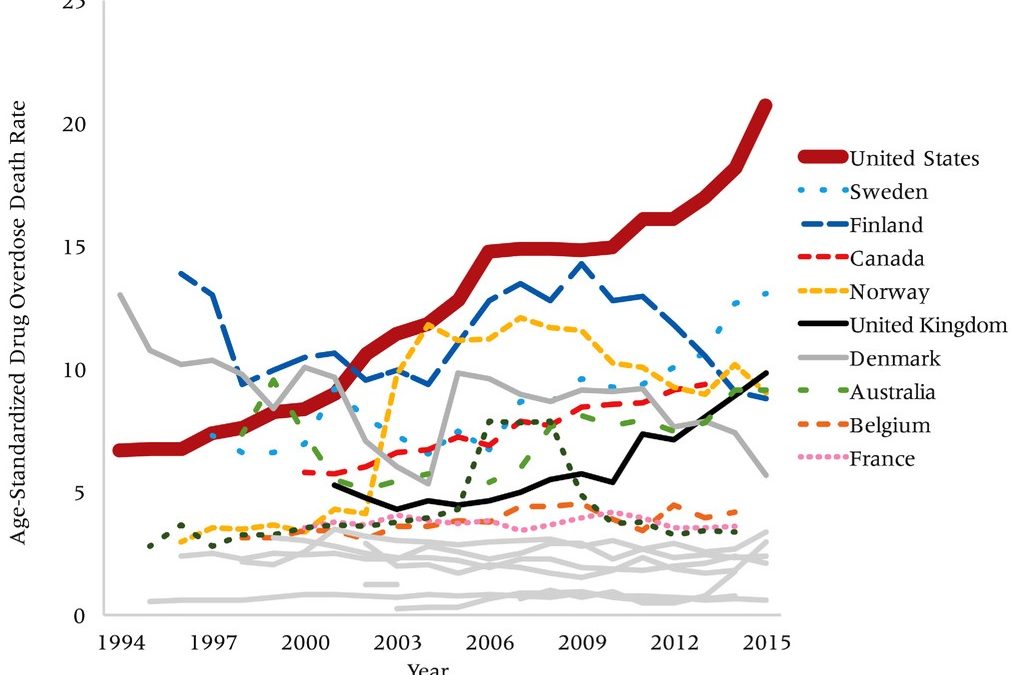In recent years, as I’m sure you know, drug overdose deaths have soared in the U.S. and spread to pretty much all segments of society, thanks largely to opioid use (painkillers and heroin). A new study confirms what most suspected: The overdose death rate in our country is much higher than in other rich countries.
The study (“Contemporary American Drug Overdose Epidemic in International Perspective”, first published in the journal Population and Development Review) is here.
The obvious question is: Why? Why are Americans dying at higher death rates than they used to, and higher death rates than people in similar economies? The study posits several possible reasons, most related to the way our health-care system is structured:
- Due to the fragmented nature of the US health care system, physicians have greater incentives to prescribe painkillers, and it is more difficult for physicians to identify doctor shopping due to the poor quality, lack, or underutilization of centralized administrative patient records. In other high‐income countries, physicians can more easily determine from patients’ medical records whether patients have seen other physicians and whether they recently received or filled prescriptions for painkillers.
- Only three countries in the world—Brazil, New Zealand, and the US—permit direct‐to‐consumer advertising; all other countries have banned this practice. … The majority of new drugs are approved in the US before other countries (Downing et al. 2012), and the US was the first country to approve OxyContin (nearly four years earlier on average than the other countries
- The US favors abstinence‐only policies, which have been hypothesized to contribute to riskier drug use, less access to treatment, and higher drug overdose mortality. In contrast, most European countries pursue a harm reduction approach while Canada falls somewhere between the two
- One factor believed to contribute to the drug overdose epidemic is that Americans want “quick fixes” or “magic bullets,” so they are more likely to expect and demand immediate pain relief and prescription painkillers from their physicians than people in other high‐income countries… For example, in an environment where patients have wide choice and can easily change providers, physicians have stronger incentives to placate patients by prescribing painkillers, particularly when they have heavy caseloads and their salaries are tied to patient satisfaction.


 Return to the Concord Monitor
Return to the Concord Monitor